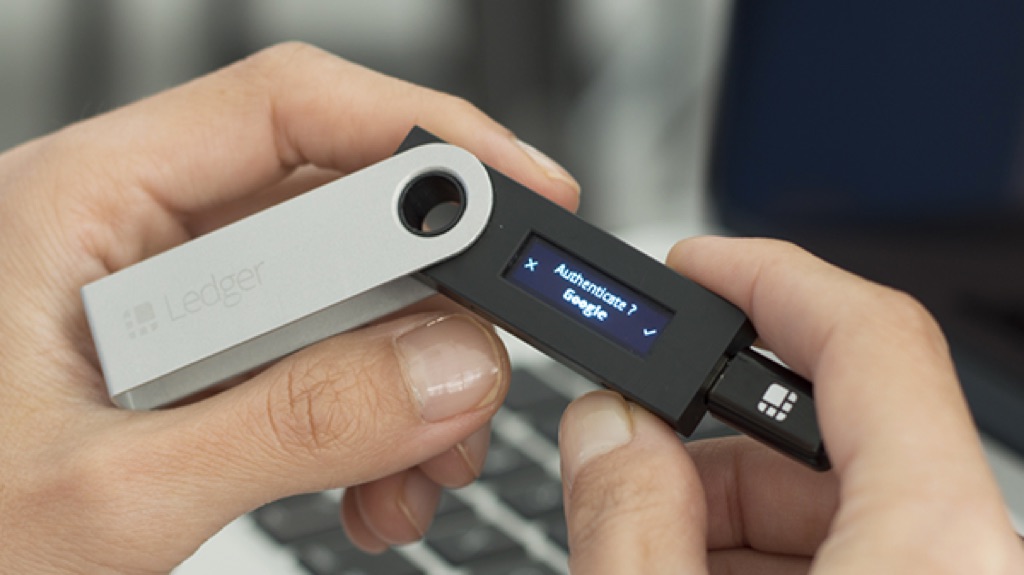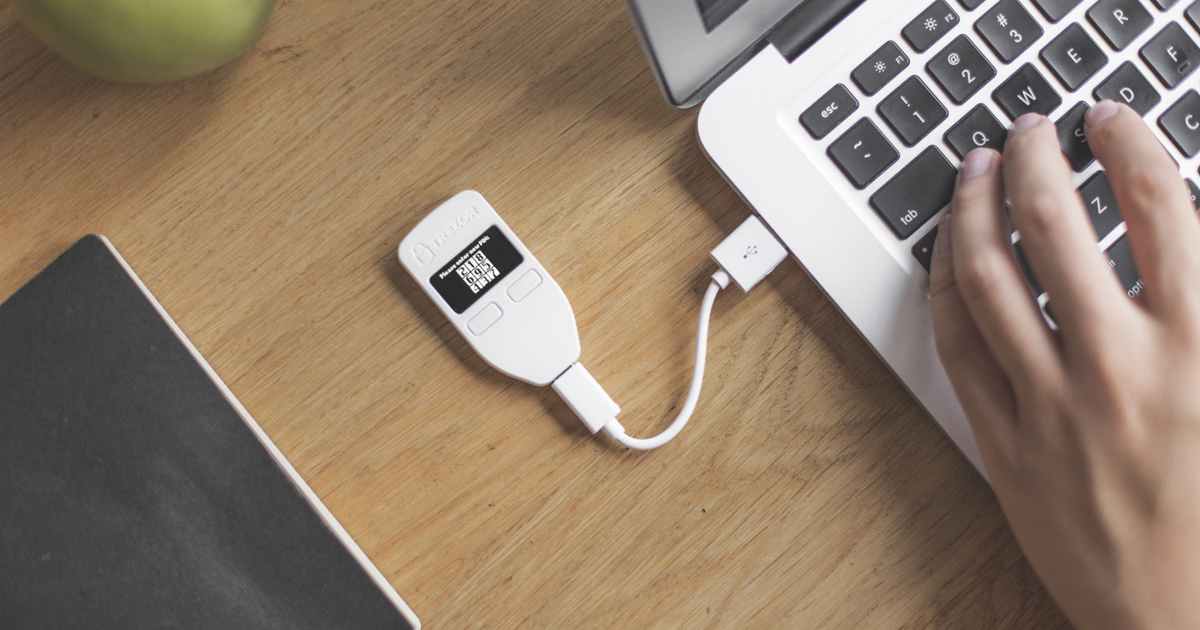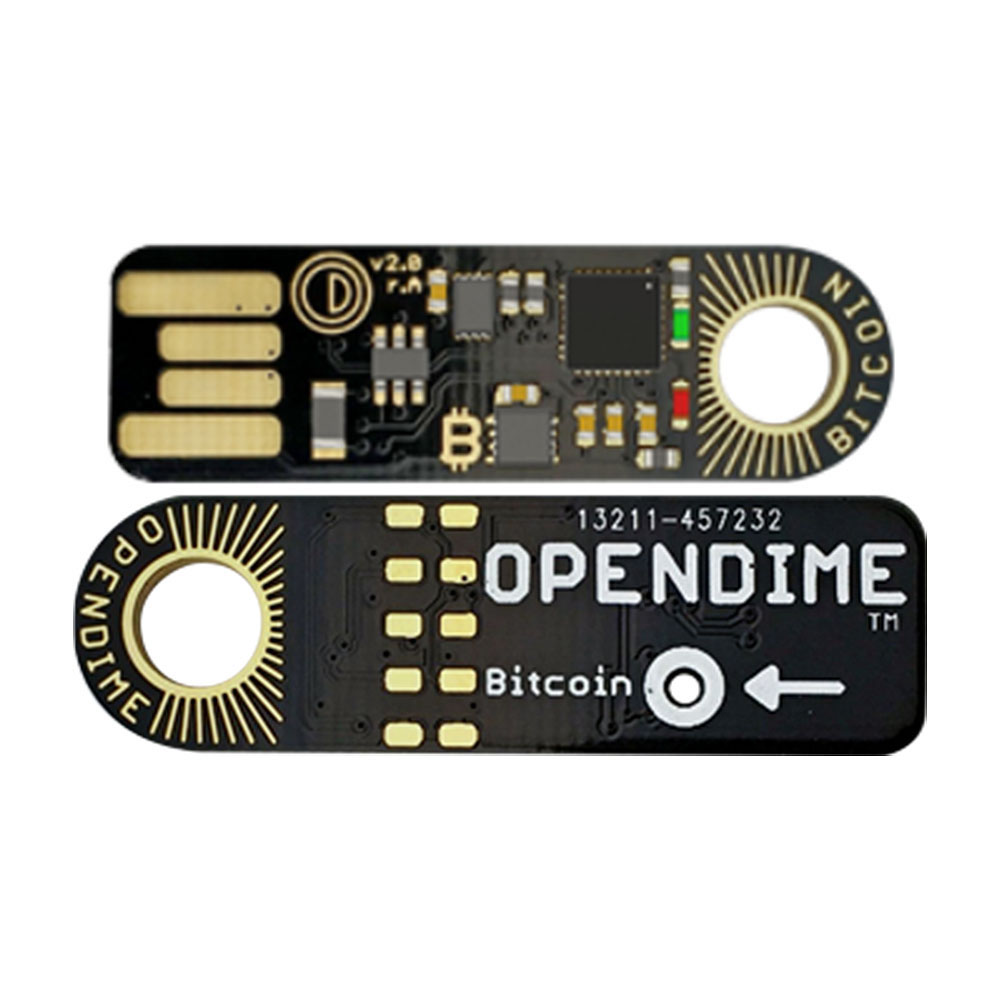Table of Contents
If you own large amounts of coins, we highly recommend investing in a hardware wallet. Hardware wallets are the most secure way to store your precious cryptocurrencies. They have vital security features such as scrambled PIN codes and offline storage. They typically cost between $90 and $200.
Sadly, the majority of cryptocurrency users leave their coins vulnerable on exchanges or online wallets such as Coinbase. While this is certainly the most convenient option, it provides very little protection in the event that the exchange or wallet is hacked. It also makes it impossible to recover lost data since you do not have control of your private keys.
When dealing with cryptocurrencies, it is always better safe than sorry. There is no institution such as a bank who will protect you from a thief or scammer so once your funds are lost they are gone for good. Depending on your needs, certain cryptocurrency wallets are better than others. For most cryptocurrency holders, the Ledger Nano S or Trezor will be the best option, due to their ease of use for daily transactions, and impeccable security for long-term holding.
This may seem pricey, but hardware wallets are a one-time investment that will keep you secure for the long term. Think of it as a safe.
Here is a comparison of several well-known hardware wallets:
Ledger Nano S

image via Worldwide Wallets
The Ledger Nano S is the most popular hardware wallet at the hardware wallet on the market due to its competitive pricing, good reputation, and the fact that it supports many coins. It is a sleek device resembling a USB drive and it is very simple to use. They are sold on the official Ledger site for €79.
We do not recommend purchasing a Ledger Nano S from third-party resellers. There have been reports of resellers infecting Ledgers with malware to steal private keys. It is best to order directly from Ledger.
How does the Ledger work?
The functionality of the Ledger Nano S is quite simple. Data is accessed with the microchip inside of the device which is protected by a PIN code. Any outgoing transactions from the device must be confirmed with the physical press of a button, ensuring that no one can access your funds remotely even if your computer or access point is infected with malware.
Additionally, the Ledger Nano S ensures that all sensitive data is contained within an isolated component of the microchip so your private keys cannot be stolen.
What if your Ledger is lost or stolen?
Luckily, if your Ledger is ever lost you can easily recover your funds with the seed phrase that you will copy upon setup. Any thief who may have found you Ledger will have no way of accessing your funds without knowing the PIN code of the device. After a few failed PIN attempts, the device will wipe itself locally and erase all data.
Does it only store Bitcoin?
The Ledger Nano S stores a vast array of coins including favorites such as Bitcoin, Ethereum, Ripple and ERC20 tokens. Here is the full list of supported coins:

How do I use my Ledger Nano S?
The Ledger Nano S can be set up and operated from any computer with a USB port. When connecting your Ledger for the first time, you will need to download the Google Chrome Ledger manager app.
The Ledger has two buttons on it which correspond to up or down and are used to navigate the menus. Click both at once for “Select.”
Trezor

image via Trezor.io
Trezor is another classic hardware wallet with a long reputation for creating quality devices. Trezors sell for slightly more than the Ledger Nano S, at a price of €89.
Why is Trezor so secure?
Trezor’s unique PIN code provides incredible security. The device shows a scrambled series of numbers when the PIN is required, and the user must select the corresponding numbers on a blank box shown on their computer screen. This system of blindness and randomness prevents anyone from stealing your PIN even if they have already hacked your computer.
Trezor also features two-factor authentication that can be applied to add additional security. The most common procedure used is the Time-based One-Time Password (TOTP) which features random authentication codes scrambled every few seconds.
What if I lose my Trezor?
Trezor provides you with a recovery seed upon setup, so you can easily recover your funds if the device is lost. Thanks to the blockchain, you will never lose your private keys or transaction history.
How do I use the Trezor wallet?
When you initiate a transaction, a request is sent through the Trezor which requires a digital signature. The Trezor will display the transaction information including amount and destination address. The transaction must be validated by two physical clicks from the user, ensuring that the funds can never be transferred remotely.
Trezor supports the following cryptocurrencies:
- Bitcoin
- Litecoin (LTC)
- BCash (BCH)
- Ethereum (ETH)
- Ethereum Classic (ETC)
- Dash (DASH)
- Zcash (ZEC)
- Dogecoin (DOGE)
- ALL ERC-20 tokens
KeepKey

image via Buy Bitcoin Worldwide
Keepkey is a minimalist hardware wallet costing $129. It provides added security to actions such as private key generation, storage, and transaction signing. This hardware wallet generates its own private keys with the assistance of a number generator which uses randomization factors provided by actions of the user. This ensures that there is no pattern to the keys and that they are truly random.
Keepkey Recovery Phrase
Keepkey provides a 12-word seed phrase by default, but longer passphrases can be used if desired. We think that a 12-word seed is sufficient, but the longer your phrase, the more secure it will be. The passphrase can be used to recover all information from your wallets if the device happens to be lost or broken.
Keepkey is sleek and easy to use, but it does not support as many coins as the rest, and it is relatively expensive when compared with the Ledger Nano S.
Keepkey currently supports the following coins:
Bitcoin, Litecoin, Dogecoin, Namecoin, Testnet, Ethereum, and Dash
OpenDime

image via Crypto Cousins
OpenDime is a lesser-known hardware wallet which is sold in packs of three for $37.50. They are quite unique in design and operation. OpenDime aims to be “cash for the crypto world,” where instead of handing someone cash, you could simply hand over an OpenDime. That said, it is geared more toward in-person transactions than long-term holding.
To set up the OpenDime, plug it into your USB port on your computer. The setup guide is available in a readme file that should appear upon connection. It will request for you to submit a file which will be used to randomize a new private key.
Once the key is created, load the OpenDime with the desired coins. The private key will remain untouchable until it is “opened.” An OpenDime can be physically opened with a small item such as a dime which will expose the private key.
Once opened, it can be plugged back into a computer to access its contents.
From the official OpenDime website, here are some situations in which an OpenDime may be useful:
- Gifting someone a Bitcoin! Preload an OpenDime and mail it to a friend.
- Deliver the payment for a car when you go to pick it up. Just put your payment on an OpenDime and hand it over when you get the keys. Private key for car keys!
- Load a number of OpenDimes with various denominations of Bitcoin. Keep them in your pocket to pay for things throughout your day.
- Sell OpenDimes, preloaded with value, in exchange for gold or other precious metals.
- Use this instead of a paper wallet. Just as “compatible” but takes care of generating the private key safely.
What other cryptocurrencies can OpenDime store?
Currently, OpenDime only supports the classics, Bitcoin and Litecoin. They may add support for more coins in the future.
Is OpenDime secure?
OpenDime is secure until it is opened. The private key is completely covered until the security clip is broken off. Some hardware components and diodes are exposed on the outside but pose a minimal security risk if the OpenDime is kept in a safe environment such as a drawer or safe.
Digital BitBox

image via Gadget Flow
Digital Bitbox is a hardware wallet created in Switzerland by Bitcoin Core creator Jonas Schnelli. Digital Bitbox aims to make coin storage as simple as possible by handling RNG and key storage so the user doesn’t need to worry about it. It does not feature a screen, so it is managed with a software interface once connected to a computer. Digital BitBox sells for €59 on their official website.
How secure is Digital Bitbox?
Digital Bitbox is considered to be impenetrable, as it utilizes encrypted USB communication, tamper-resistant microchips, and options such as two-factor authentication. Offline backups can be easily created using the Micro SD slot on the side of the device, which can add peace of mind in case the device is lost or stolen. The Digital BitBox is entirely open-source and the code can be viewed in its entirety on Github. This adds a level of transparency to the Digital BitBox project which is unmatched by other hardware wallets.
What other coins does Digital BitBox support?
Digital BitBox support Bitcoin, Litecoin, Ethereum, Ethereum Classic and ERC20 tokens. They may add support for additional cryptocurrencies in the future.
Conclusion
Depending on your needs, some hardware wallets may be better than others. For the majority of cryptocurrency holders, the Ledger Nano S or Trezor will be ideal due to their impeccable security, ease of use, and somewhat broad coin support. They allow for easy daily use as well as safe long-term storage.
For exclusively long-term holds, a cheaper wallet such as a Digital BitBox or OpenDime will suffice. These are not ideal for day-to-day transactional use though.
For users who want to transact with cryptocurrencies in person, something such as OpenDime will be the best, most cost-effective option.




















